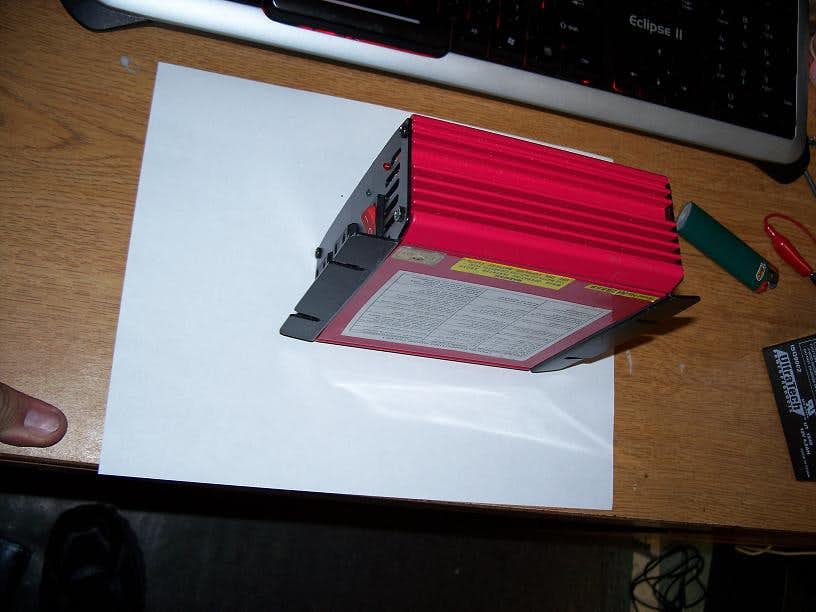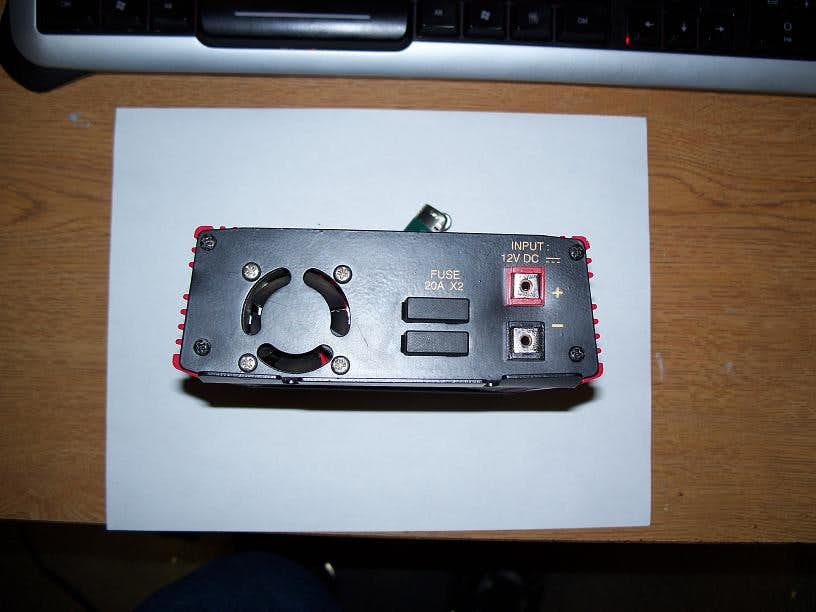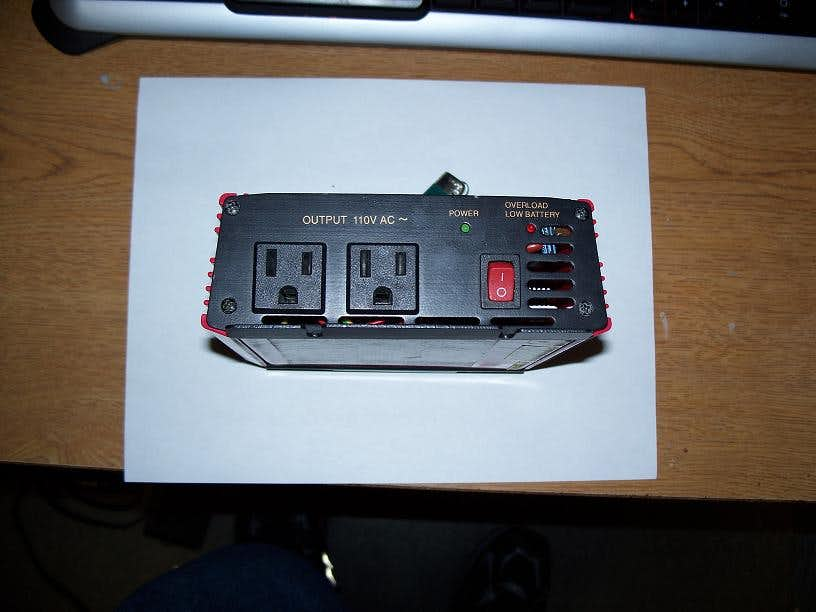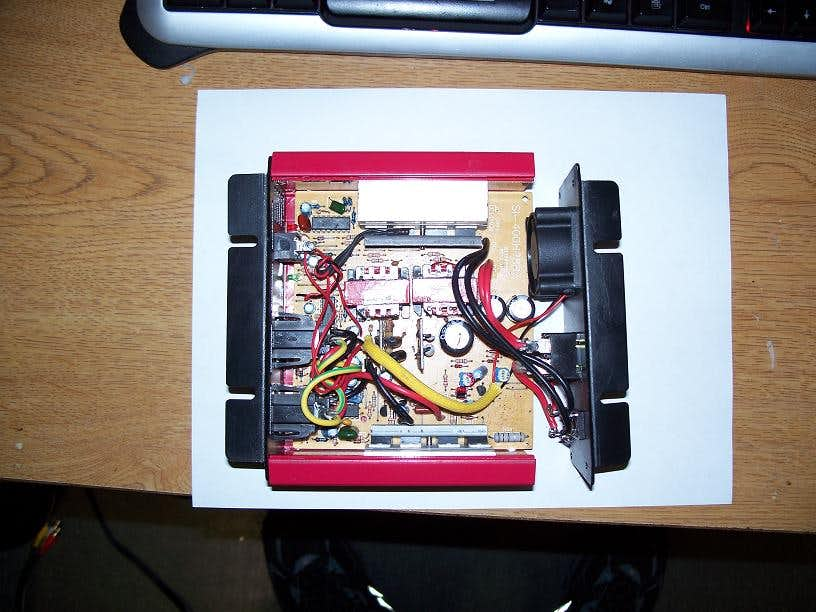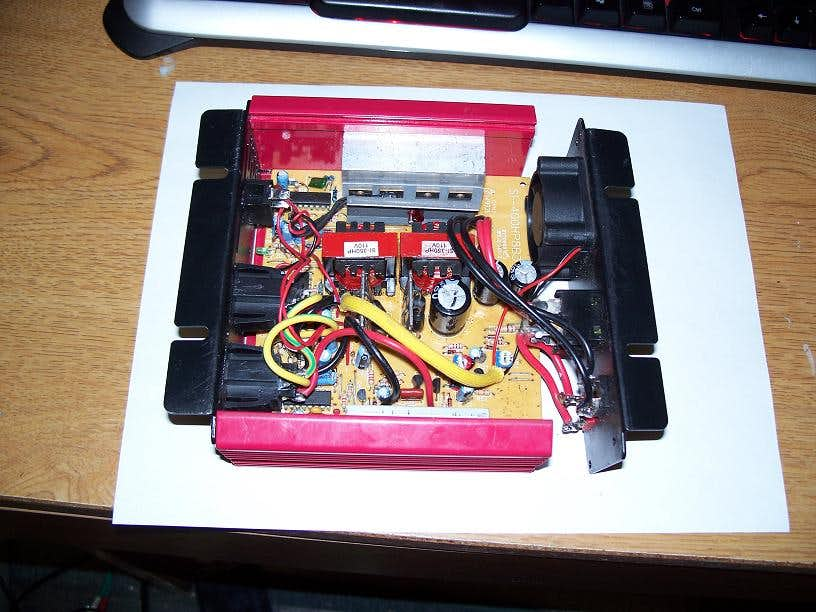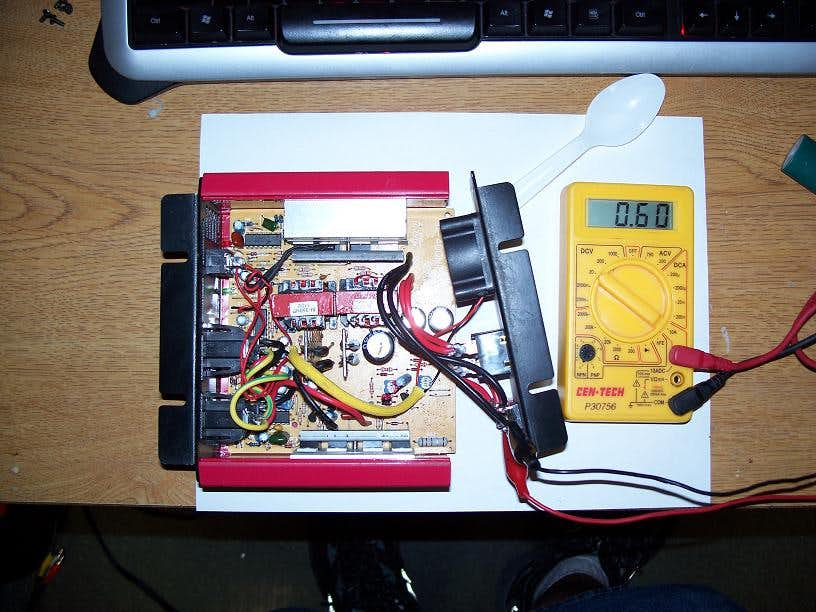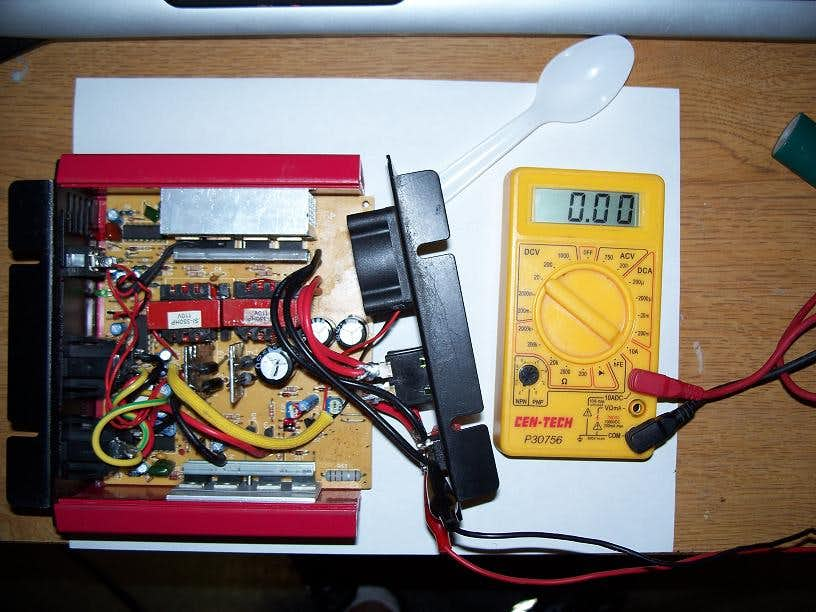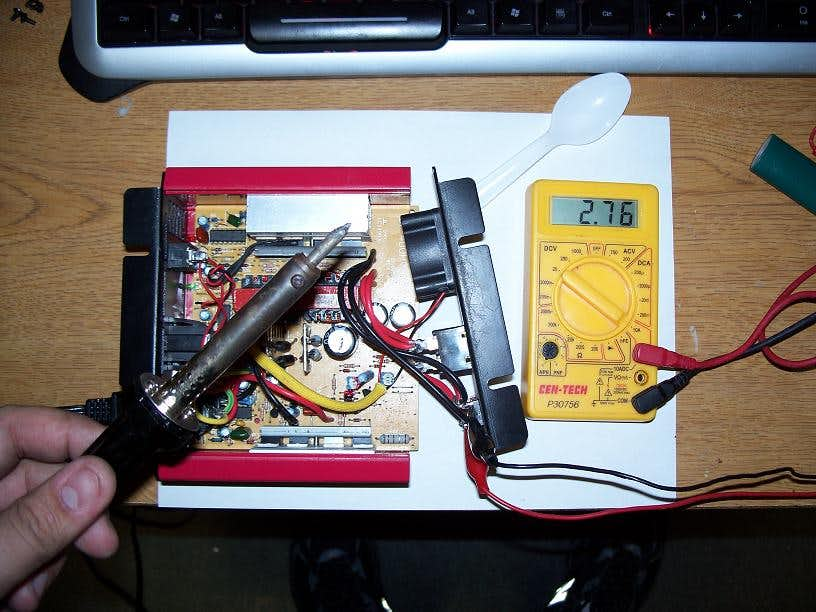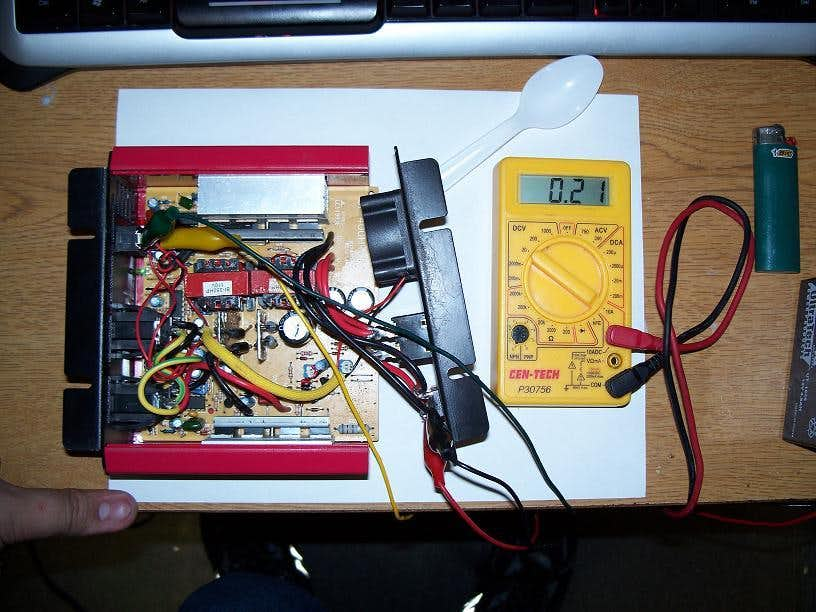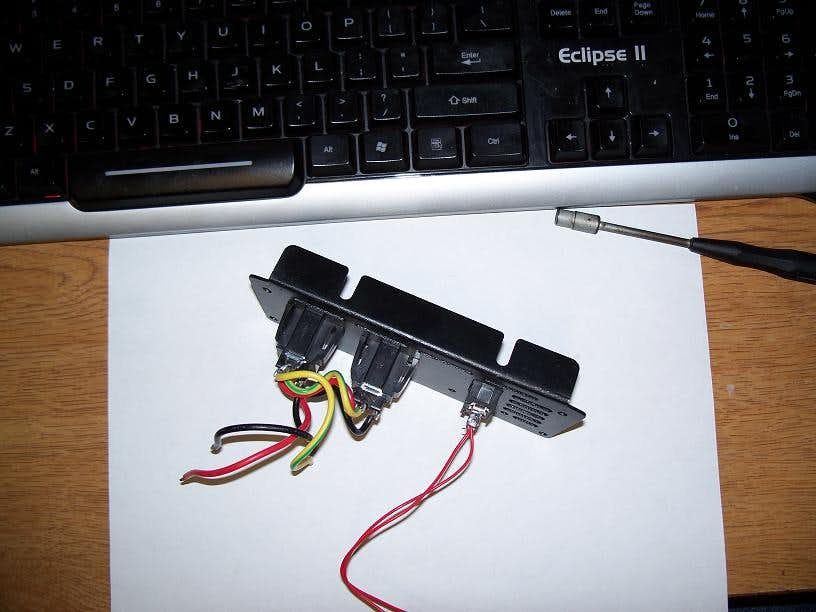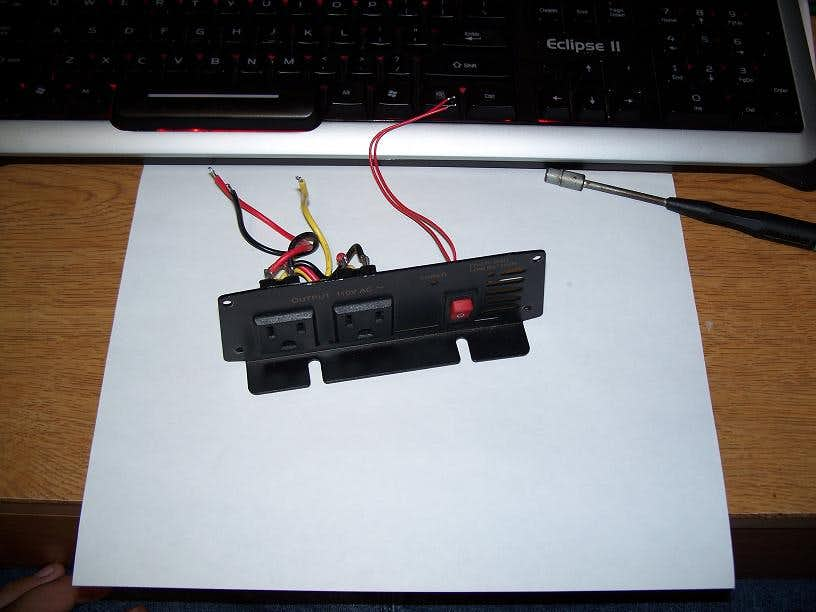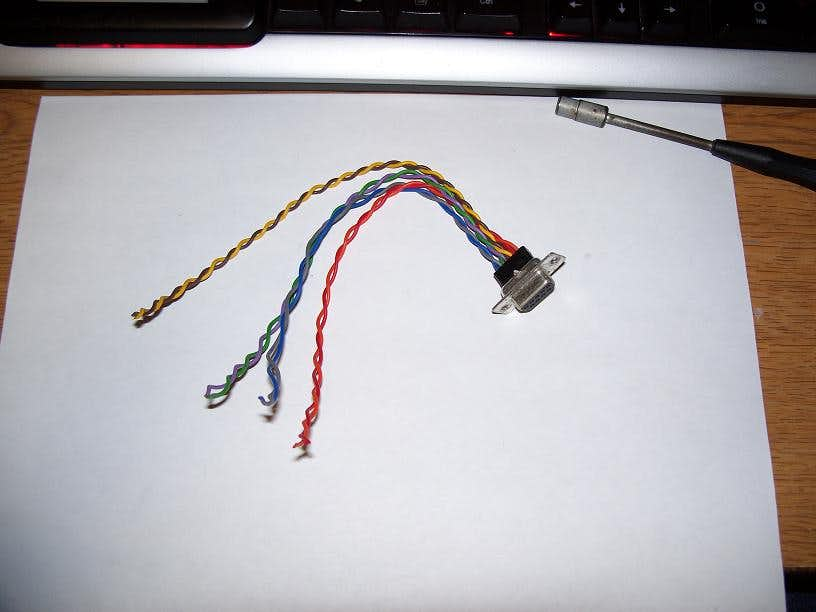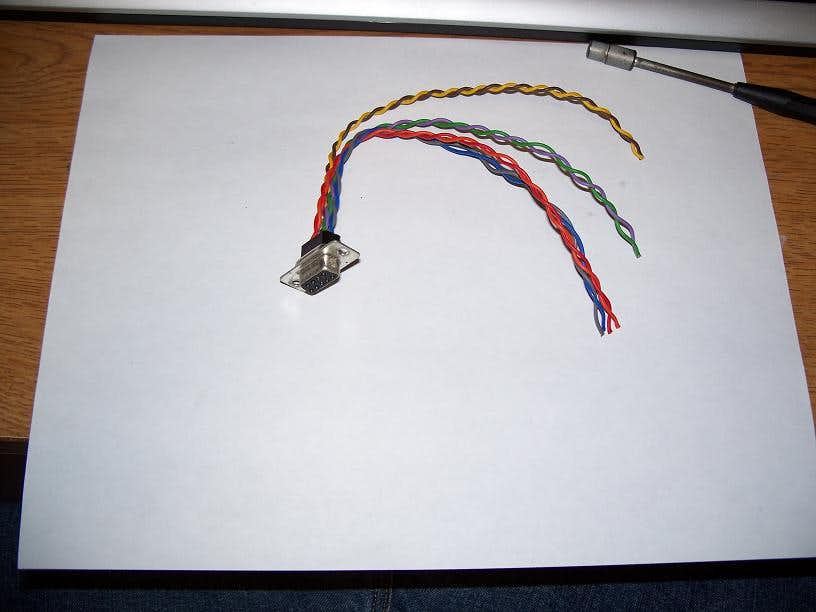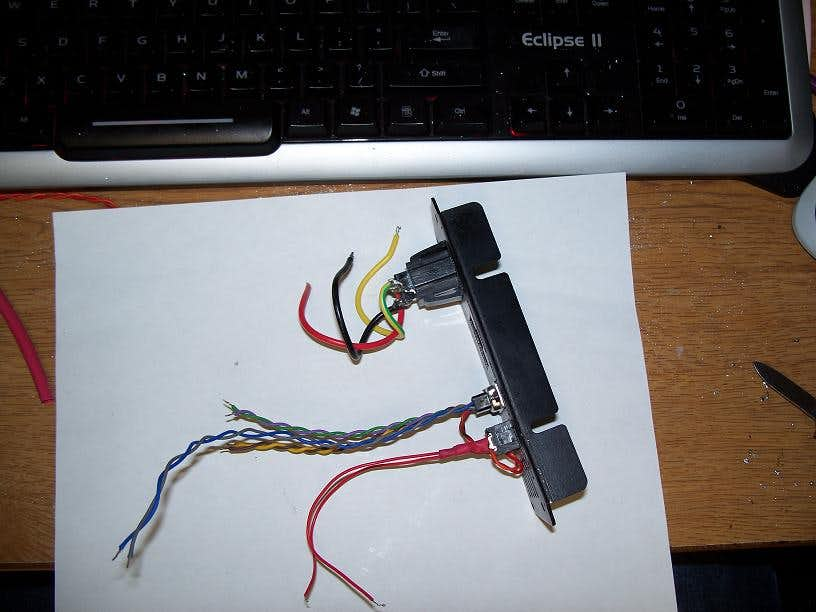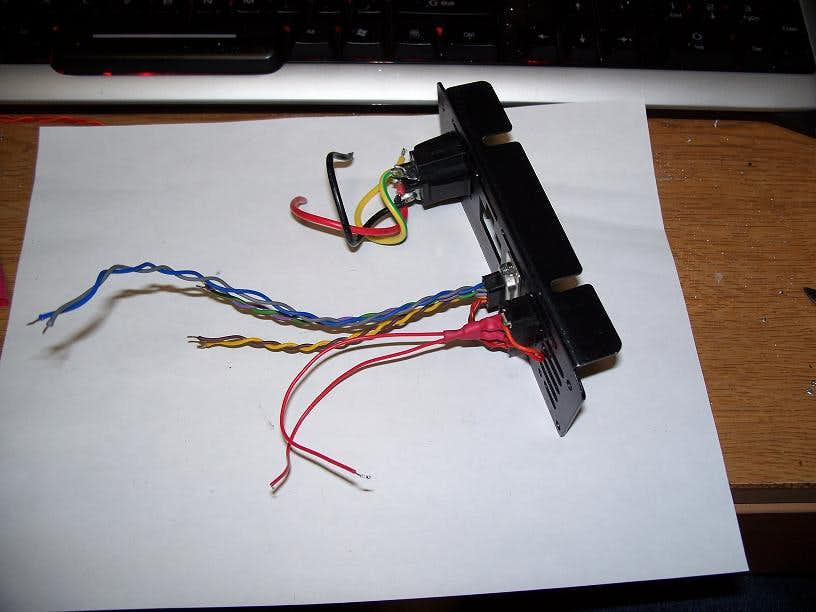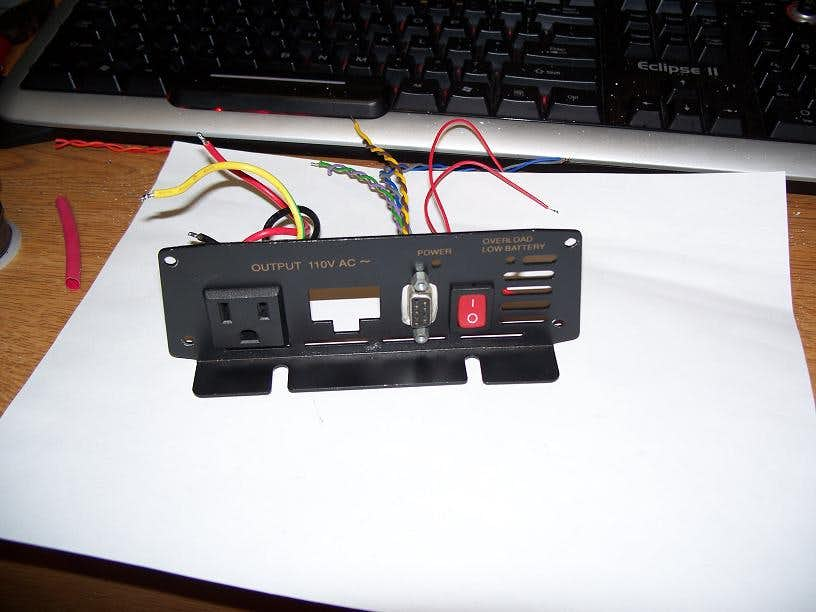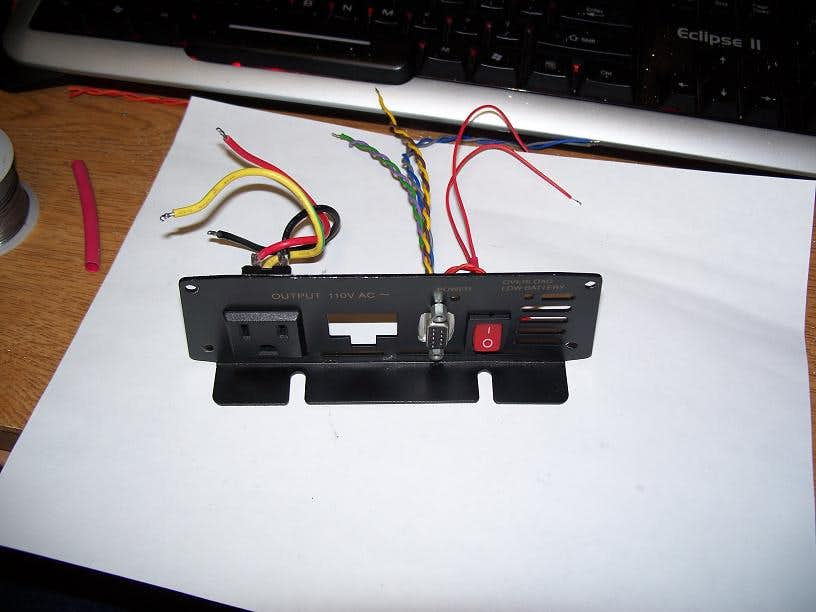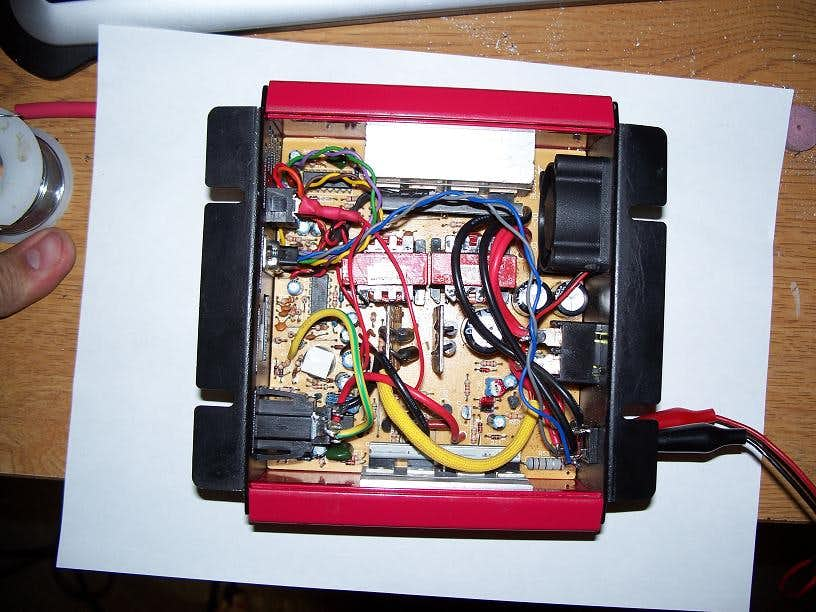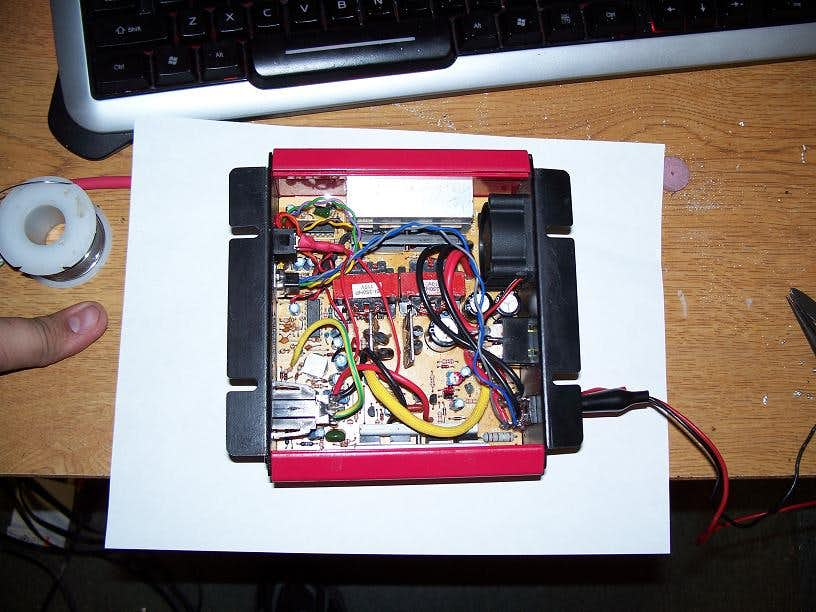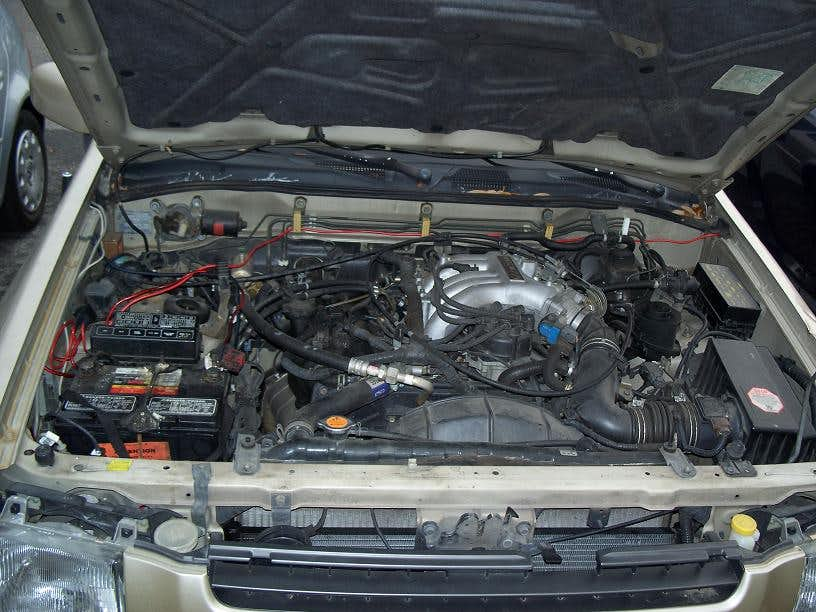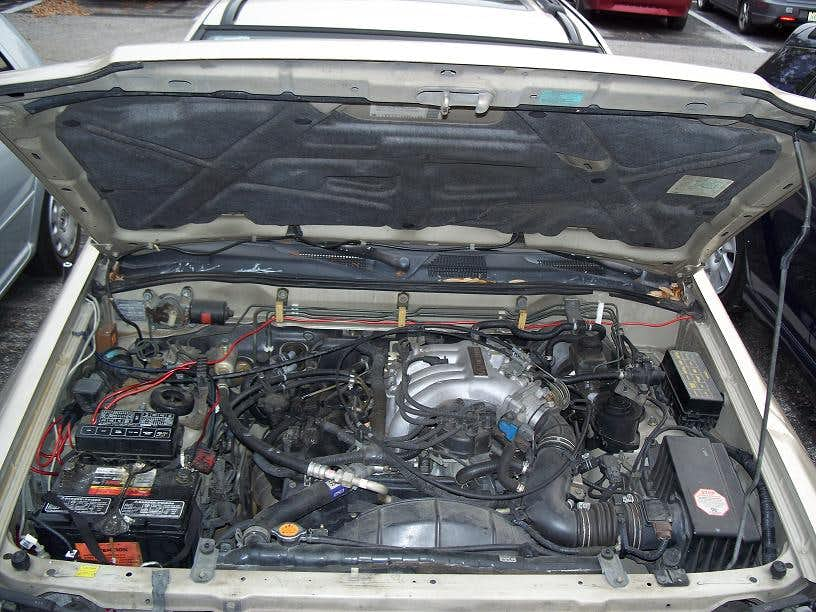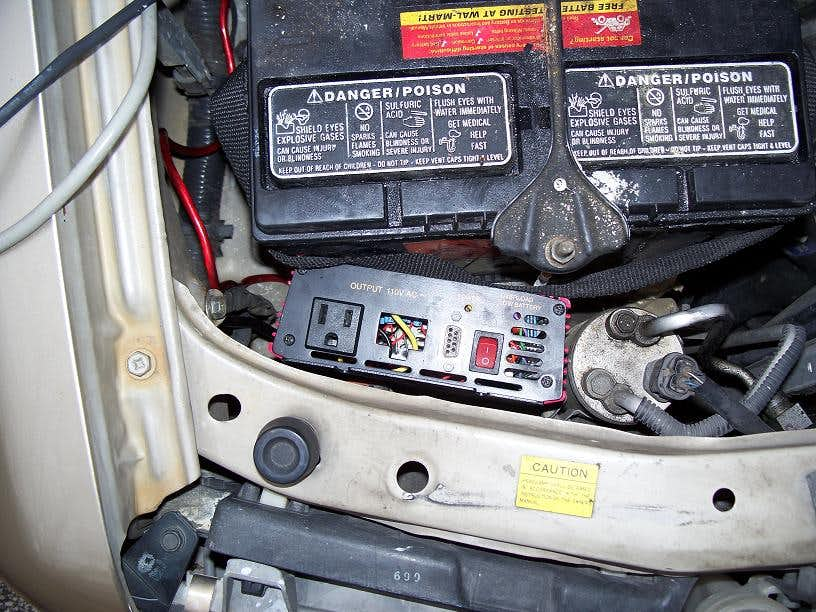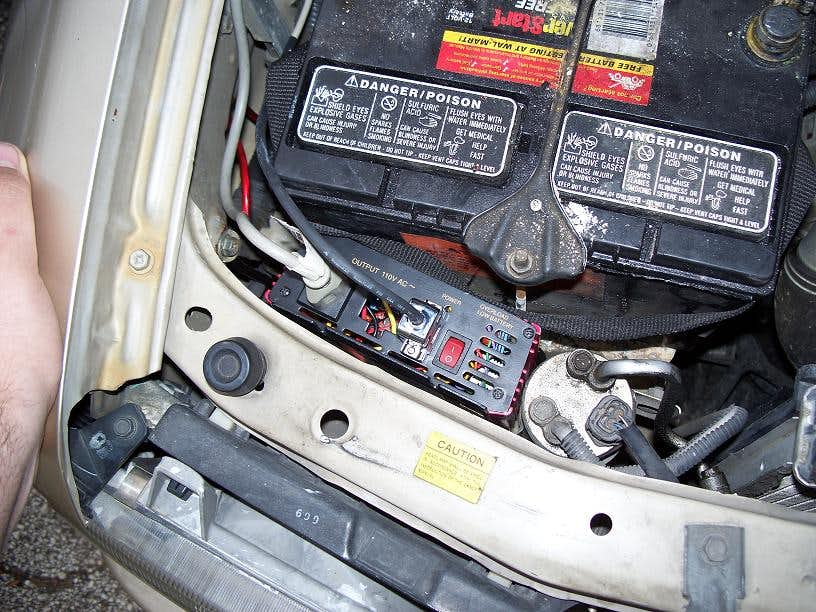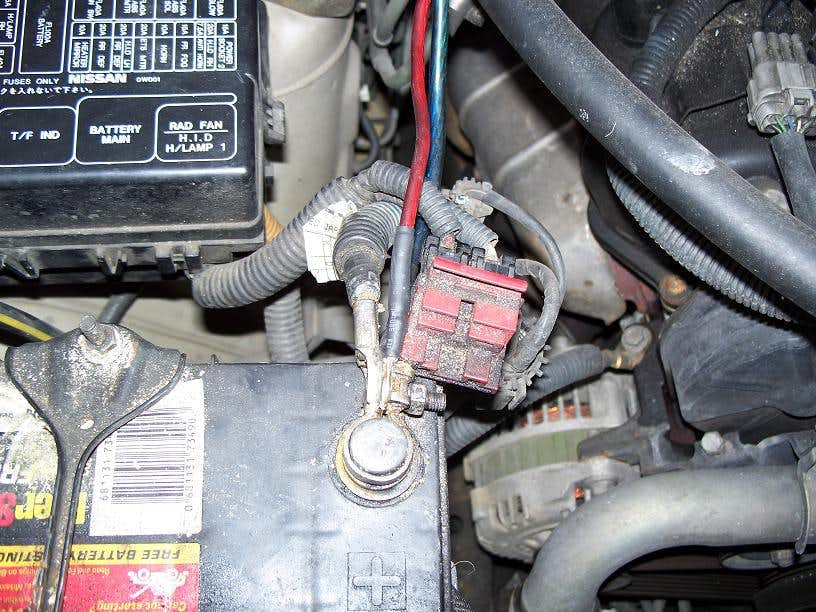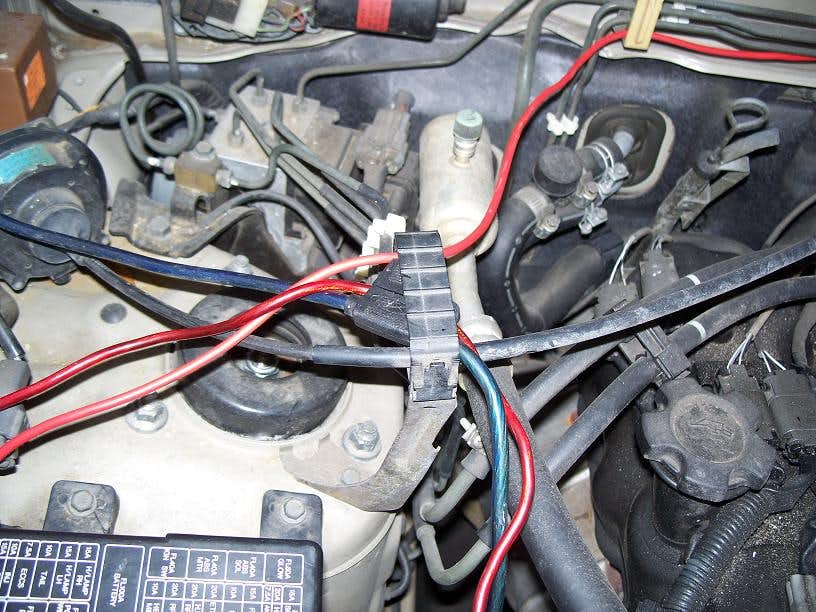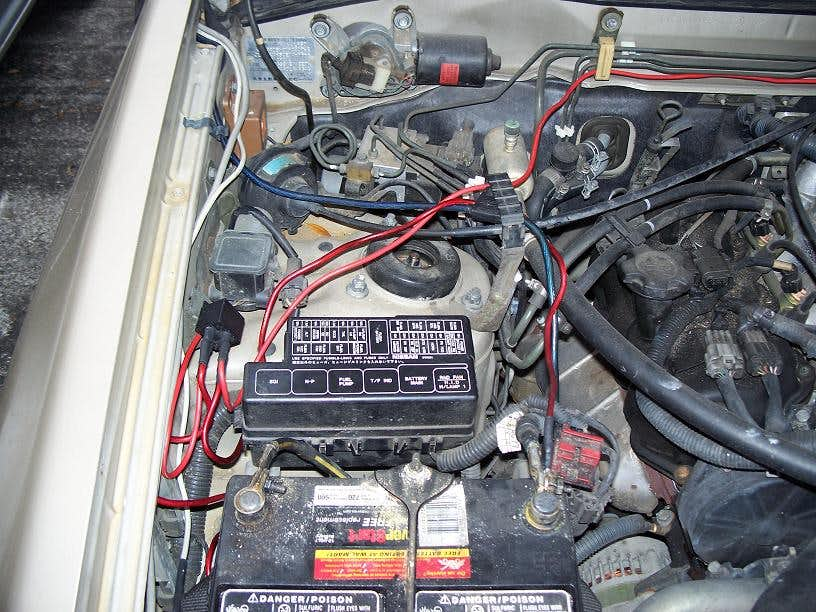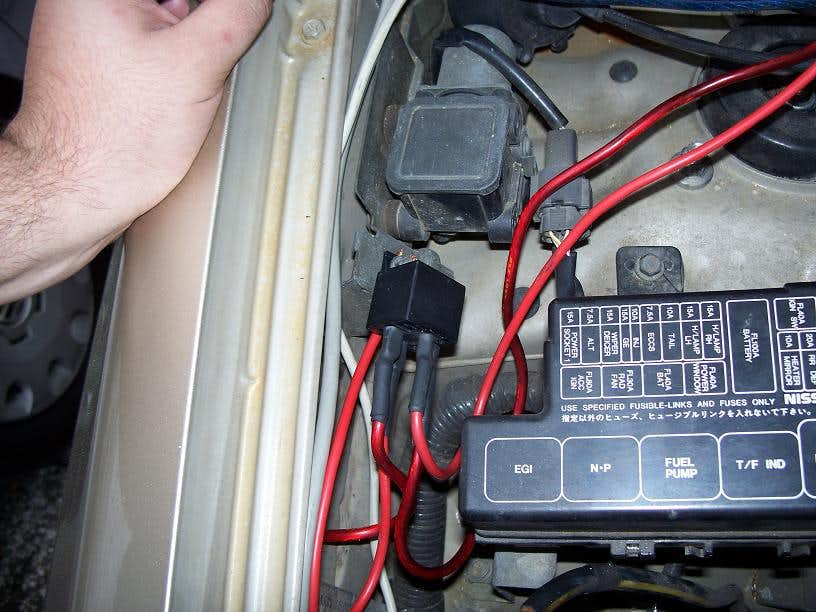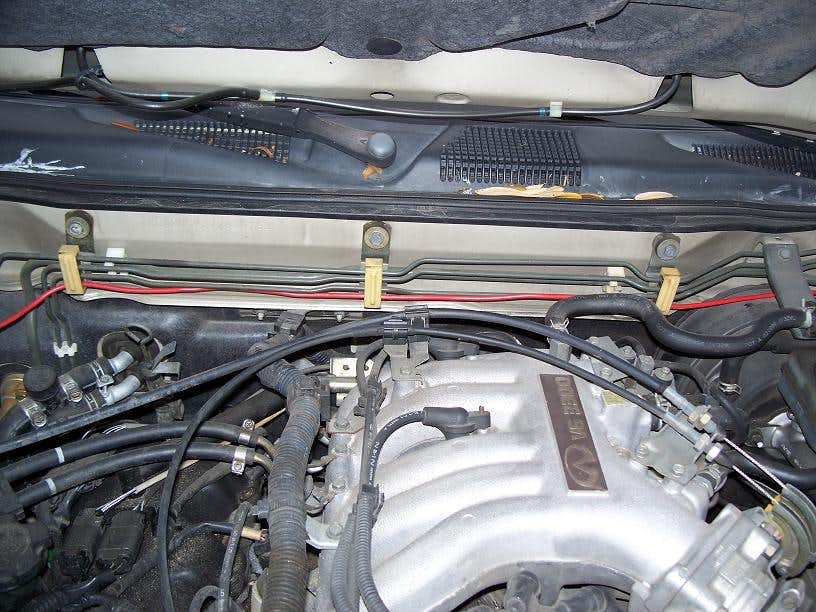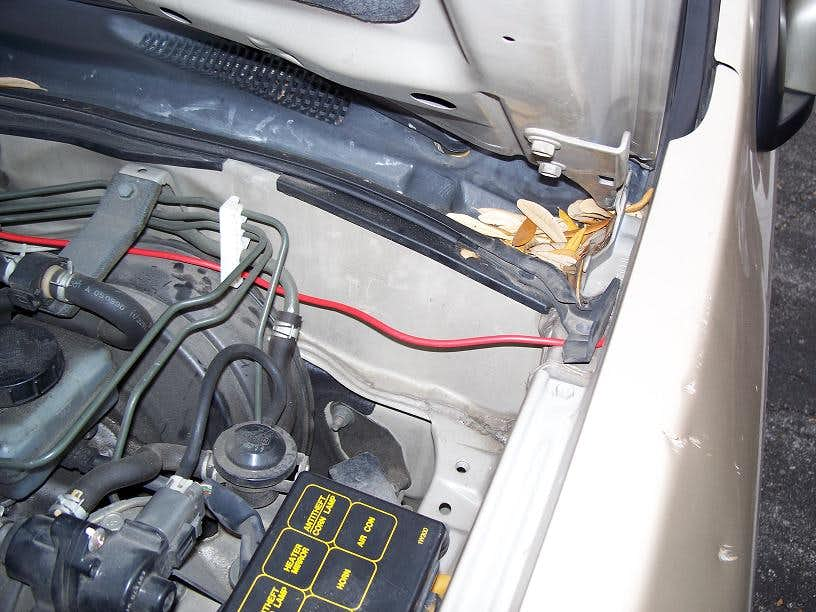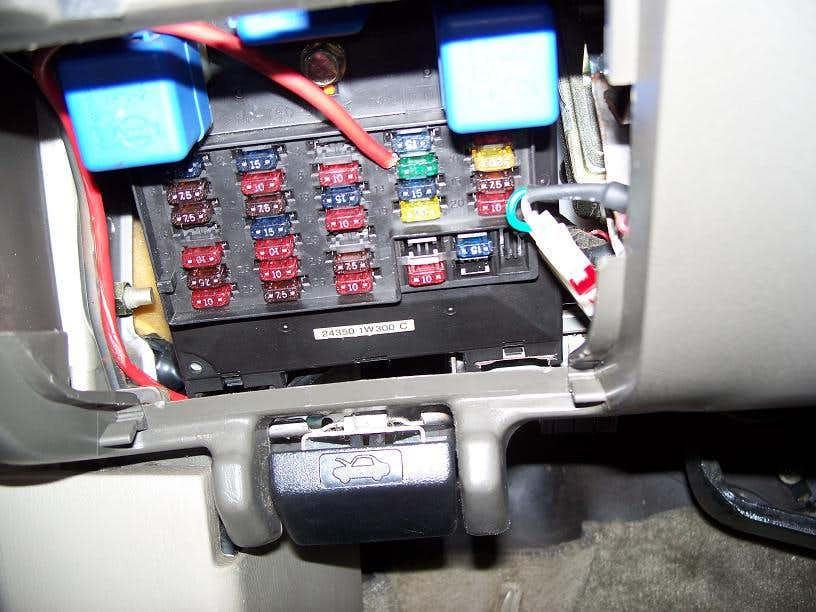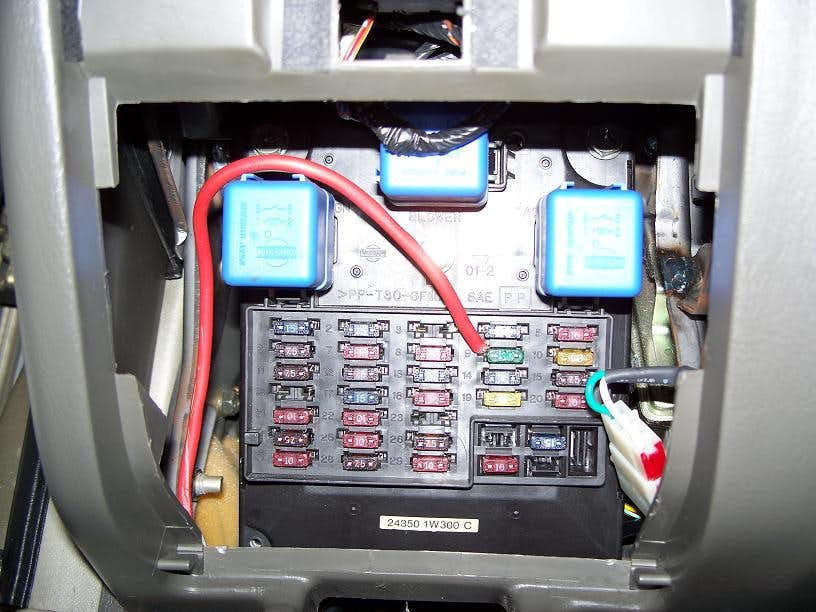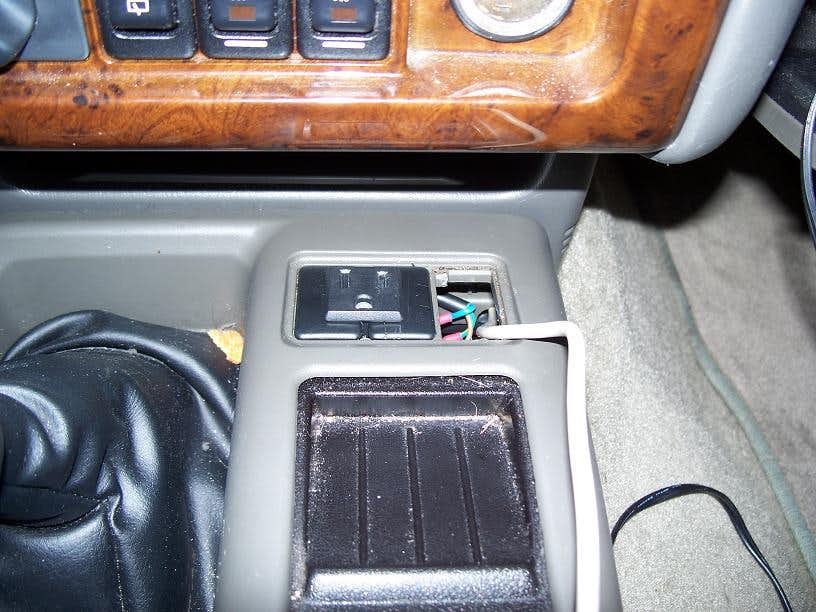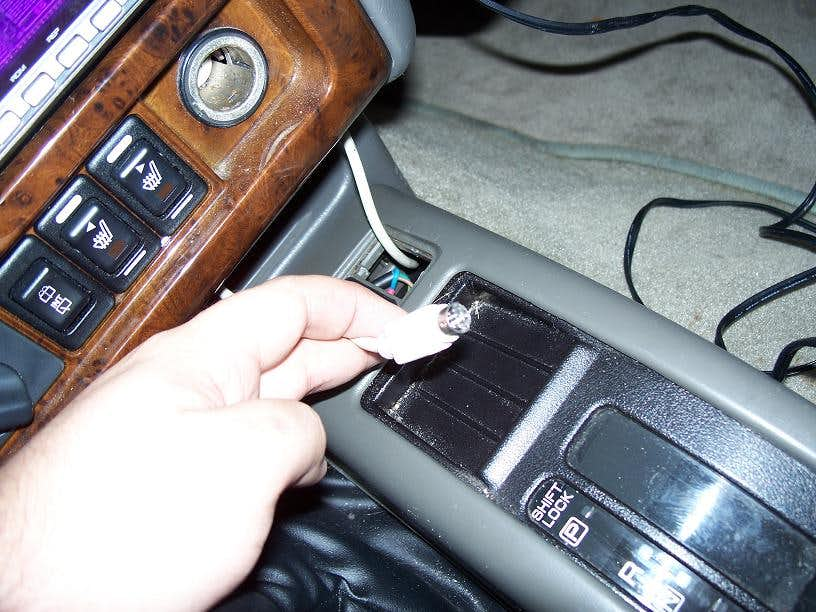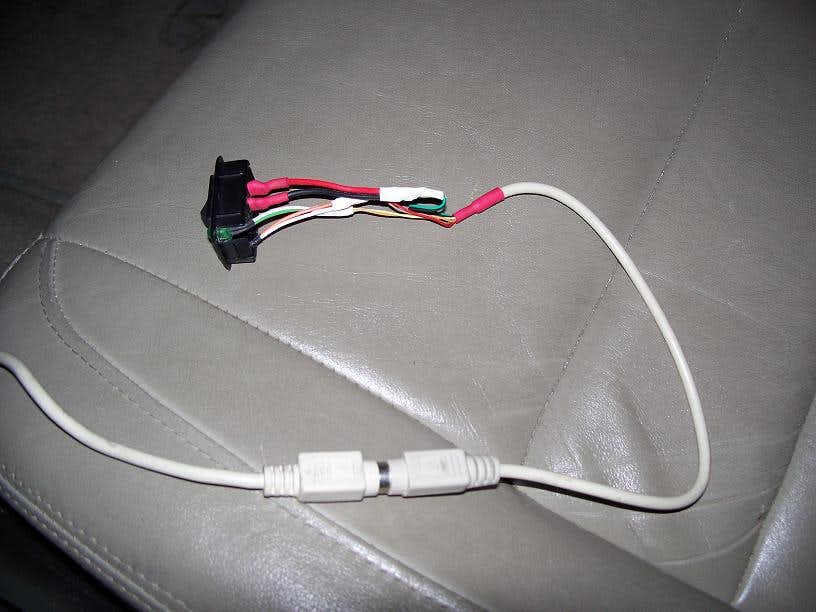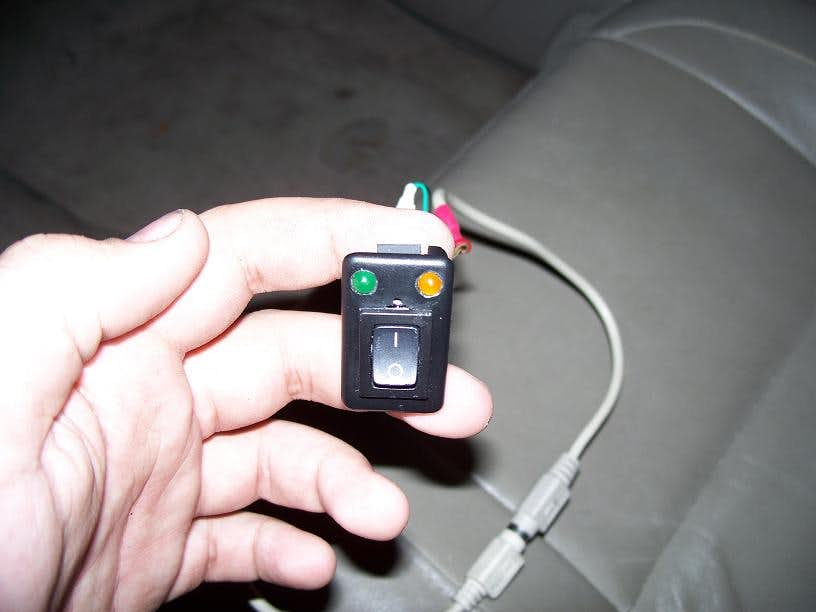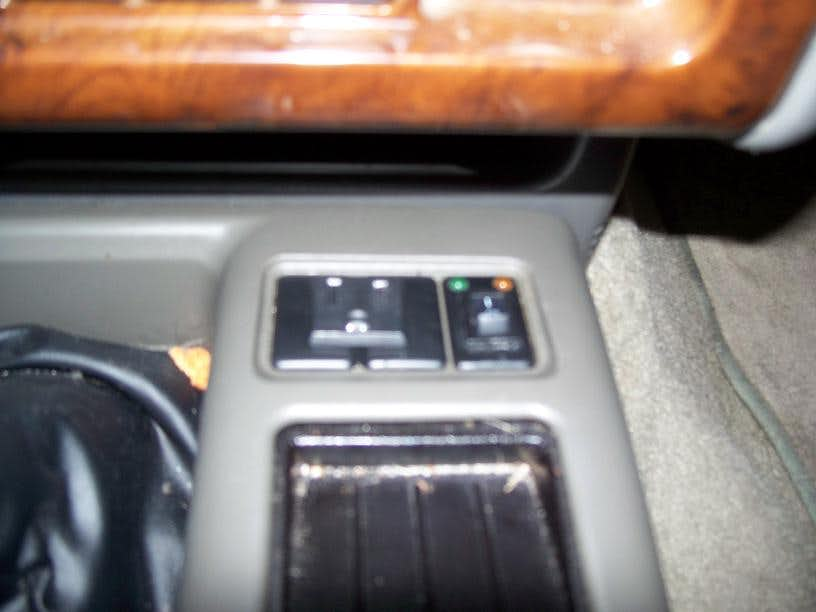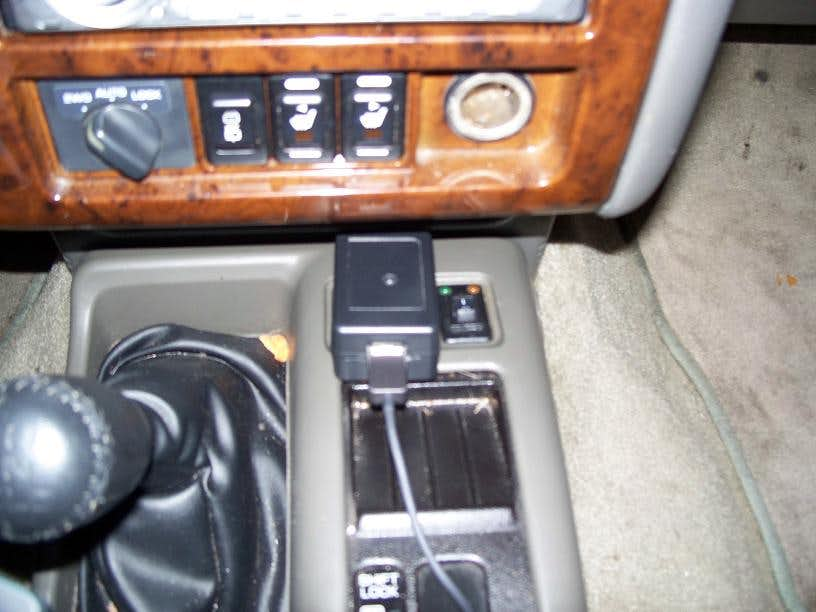Description
Introduction
So now that midterms are over and spring break just right around the corner I say to myself. Self: What would be something cool to add to your car… Wings of course. But then I remember that it would be nice to afford food for the next few years and I think a little more on budget. The budget I always aim for is No Additional Cost, and to that I will stay as true as possible.
Preliminary check of Inverter and circuit design
Now to the mod. I decided that since I take quite a few road trips in my car it would be quite cool to have an actual AC socket somewhere. I already have an AC inverter and while it is quite a convenience the sound it produces is less than desirable. This particular unit kicks out 350 watt with a 700 watt peak. Its not the most expensive one by far but it does power most things I try to use with it. Laptop’s, Cell phone chargers, my Dremel, and most importantly my soldering iron.
With that said it was time to start taking a look at the values and getting a little more technical with the device to figure out how feasible the actual idea of locating it somewhere in my car that it could be remotely turned on and have remote status indicators to let me see if it is on and debug any problems…. So the first thing I did was well… take it apart.
This is the unit itself. Its a little worn from years of use. Front and back shots of the unit. Showing the power input spot where I can power it directly off my Car’s battery, and the fuses and fan. On the other side are two electrical sockets (wired on the same circuit internally) the status indicator LED’s and the power switch.
This is a shot of the unit all taken apart. Not all that complicated and everything that I could want to solder and modify will be quite easy to do inside this case with the ample room I have. The first thing I need to know about this unit is how much power it takes up when it is on and doing nothing. Not that this information is incredibly useful it is just nice to show the difference between the on and standby states that this unit has. Above you can see that when the unit is on and nothing is plugged in the current draw in amps is about 600mA. However when the unit is off the current draw is .00 . Quite as you would expect huh? Well dont jump the gun on that. Upon further inspection I find that the power switch uses some really thin wire compared to the power input and output wires. This means that the unit actually uses solid state or a non-mechanical means to turn itself on and off. If anyone has ever installed a car audio sound system you are quite aware of the REM line required to turn on most speaker and subwoofer amplifiers. Generally when you want them on the line is pulled high to 12v. In this units case there is no specific wire that is either pulled high or low. You just simply ground the two small wires together and the unit powers on.
Now if you were paying attention you would know why it was important to make sure there is no current draw while the unit is off. Since the unit more or less sits in standby all the time when power is applied. This is key because when the inverter is wired into my car I will provide it with direct access to the Car Battery. So if the unit was drawing current while off… well then my battery would go dead.
Just for fun I plugged in my soldering iron and decided to see what the current draw was with just it plugged in and the unit on. Oddly enough the draw was only 2.76 Amps. The iron itself is a 30watt cheapo (my favorite) and the current draw on the battery was only 12v * 2.76a = ~33.12 Watts. Not very wasteful at all. At least at low power usages. I am sure as you use a device that draws more current that the efficiency goes way down. But its doing an awful lot just to make 110v out of 12v… Now the next picture is important back on the topic of the power switch. After I found out that the device turns on via a solid state method I needed to know how much current actually flowed across those wires to know what kind of wire would be suited for extending that switch. I found out it is a mere .21 Amps… Perfectly suited for something like thin ethernet wire or the likes.

Here is a quick diagram of what I want to have happen. Everything to the left of the blue line would stay under the hood. Only the essientials basically a front end would be on the inside of the car.
Creating remote port
This part of the project was crucial as I was going to mount the actual inverter somewhere under the hood of my car with the front panel actually in the cab with the AC socket. First thing was to locate the port I would use to link the AC inverter with the status display. I decided on one of my tried and true method of using an old PC comm port. So I proceeded to cut a spot on the inverter and mount although crudely a female serial port.
Here is the panel removed completely from the AC inverter. Desoldered the wiring for the switch and the AC Jacks.
Here is the serial port I will be adding to the inverter itself.
Here is a back-shot of the serial port added to the panel. I went ahead and connected two of the pairs to the power switch on the panel itself.
Here is a front shot of the port on the AC inverter panel. The cut was not perfect but I had to cut large enough to allow the male serial plug to fit over it. I also removed the 2nd AC jack as I will be mounting that one on the inside of the car.
Here is an overall top shot of the newly added wiring harness.
The pinouts of my Serial interface are as follows:
- No Connection
- Switch pin 1
- Switch pin 2
- Power LED –
- Power LED +
- Error LED –
- Error LED +
- Input Ground
- Input +12v
Installing the AC Inverter
The first thing I had to tackle was where this bugger was going to actually go under the hood. After trying it in several locations I finally found its new home, right in front of the battery. Not the most ideal spot but honestly the only place it could feasibly fit. I will build a shroud for it in the next few days to protect it from any leakage from the battery. However the goal here was to at least get it installed and working first of all.
Here is a shot up under my hood. It is a ’97 Infiniti qx4, built off the pathfinder platform.
Here you can see the AC inverter wedged in front of the battery, Still working on some proper mounts for it, however it is not going anywhere. Also this shows the two cables that plug into the unit. The Serial like cable and the AC cable that takes power into the cab.
Here is the connection I made directly to the battery to pull pure power from the battery. The RED wire goes to my AC inverter, the BLUE wire goes to my Sub’s. Also you can see the junction that holds the wires up off the body of the car.
Here you can see where the power wire for the AC inverter goes to the little black box that is a relay. The relay is required because as I came to find out: Even when the AC inverter is off it pulls just enough power to drain your battery dead over the period of a few days. (found out the hard way) So I had to create a circuit that only allowed the AC inverter to be on or in what I now refer to as Standby when the car is in ACC mode. Standby is the state where the actual AC inverter is off, but is being supplied power. This circuit will also ensure I never leave the inverter on by accident and kill my battery.
The red wire pictured above is very important as it also runs into the cab of the car. It is the wire that will activate the RELAY when the car is in ACC mode. I had to run it into the cab because I simply could not find a location to get a proper ACC hook-in.
Here is where the RED RELAY wire comes into the cab and into my inside fuse box. It is only attached temporarily this way until I can find a better solution. Also if you notice the molex connector in the bottom right of the picture. That is the connector that delivers power to my headunit/dash.
And finally the one thing I have been shooting for… The AC electrical Plug on the inside of the car. That almost looks like it was designed to be there. TRUST ME when I say this. I had no idea the console was this dirty. I will be out there soon to clean that up. The camera really brings out the dirty. The empty spot next to the outlet is where the switch/led complex will go once I have finished that. Here is that Connector we saw way back ago that runs all the way to the front serial like plug.
This is the connector that carries the signals for the power switch and the problem/power LED’s. I made it this way so I can remove the console/panels and insert without desoldering anything. The AC plug actually uses the connector from a power supply on its end so that It comes out as well.

